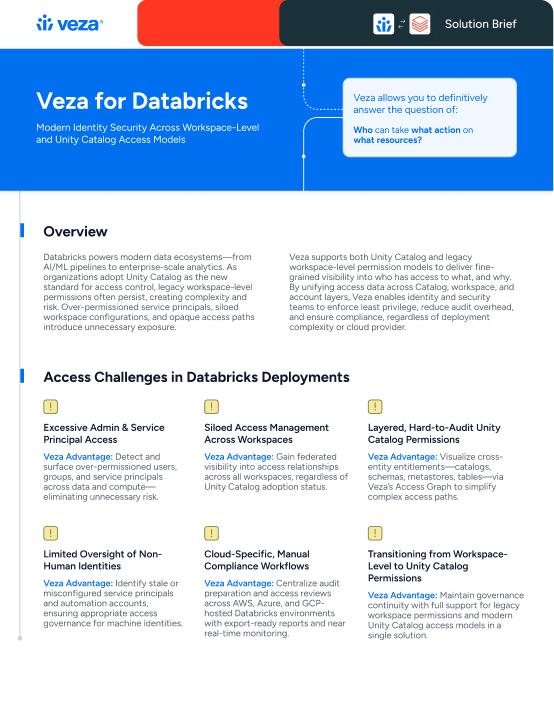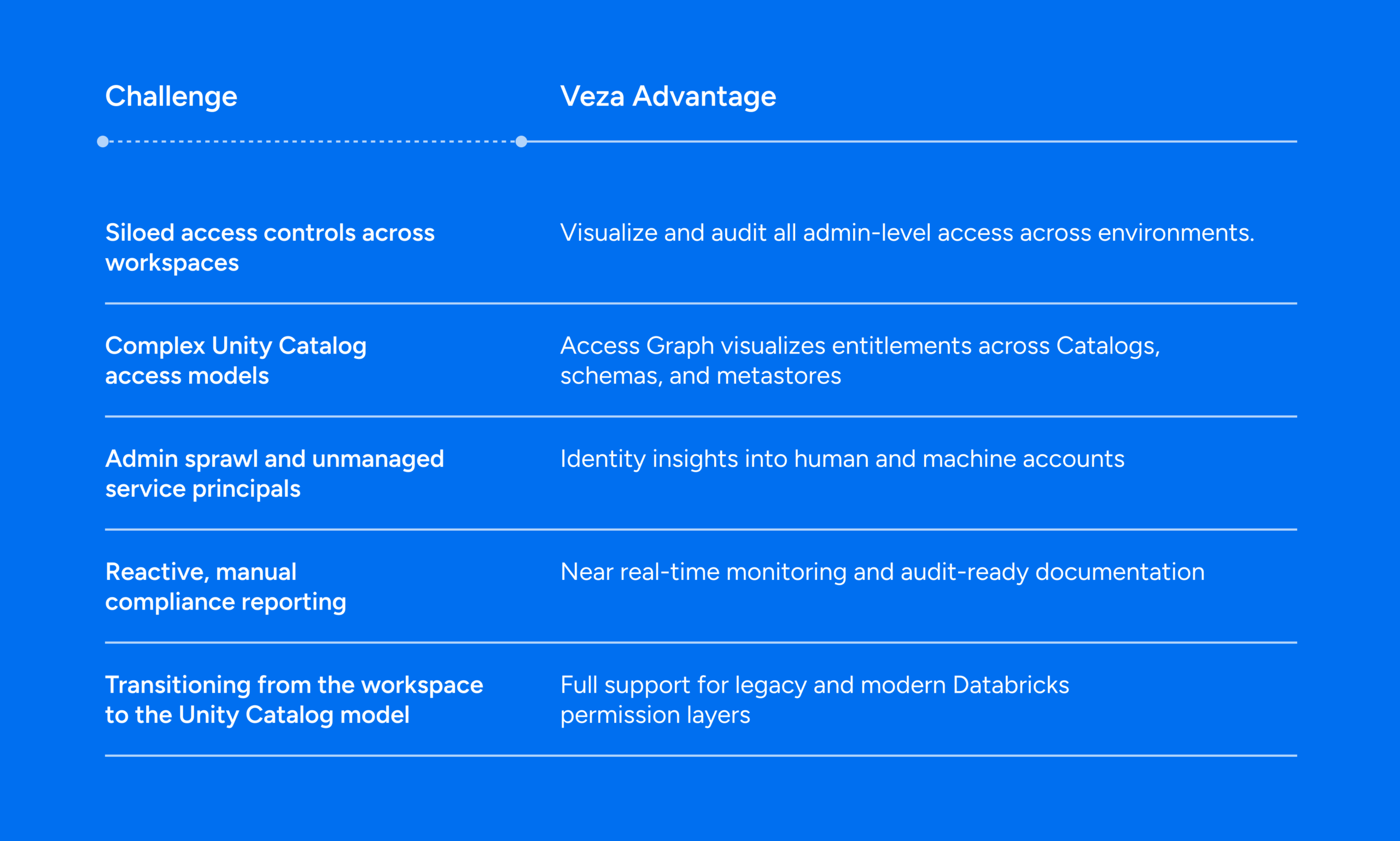Veza for Databricks
Modern Identity Security Across Workspace-Level and Unity Catalog Access Models
Databricks powers modern data ecosystems—from AI/ML pipelines to enterprise-scale analytics. As organizations adopt Unity Catalog as the new standard for access control, legacy workspace-level permissions often persist, creating complexity and risk. Over-permissioned service principals, siloed workspace configurations, and opaque access paths introduce unnecessary exposure.
Veza supports both Unity Catalog and legacy workspace-level permission models to deliver fine-grained visibility into who has access to what, and why. By unifying access data across Catalog, workspace, and account layers, Veza enables identity and security teams to enforce least privilege, reduce audit overhead, and ensure compliance, regardless of deployment complexity or cloud provider.
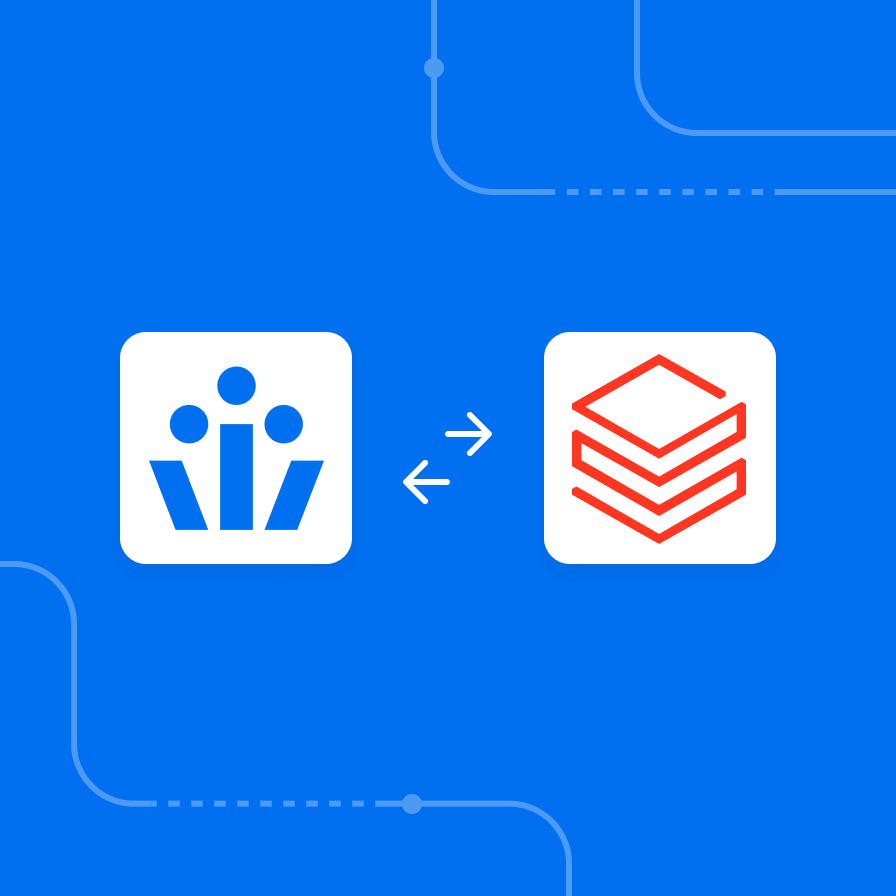
Access Challenges in Databricks
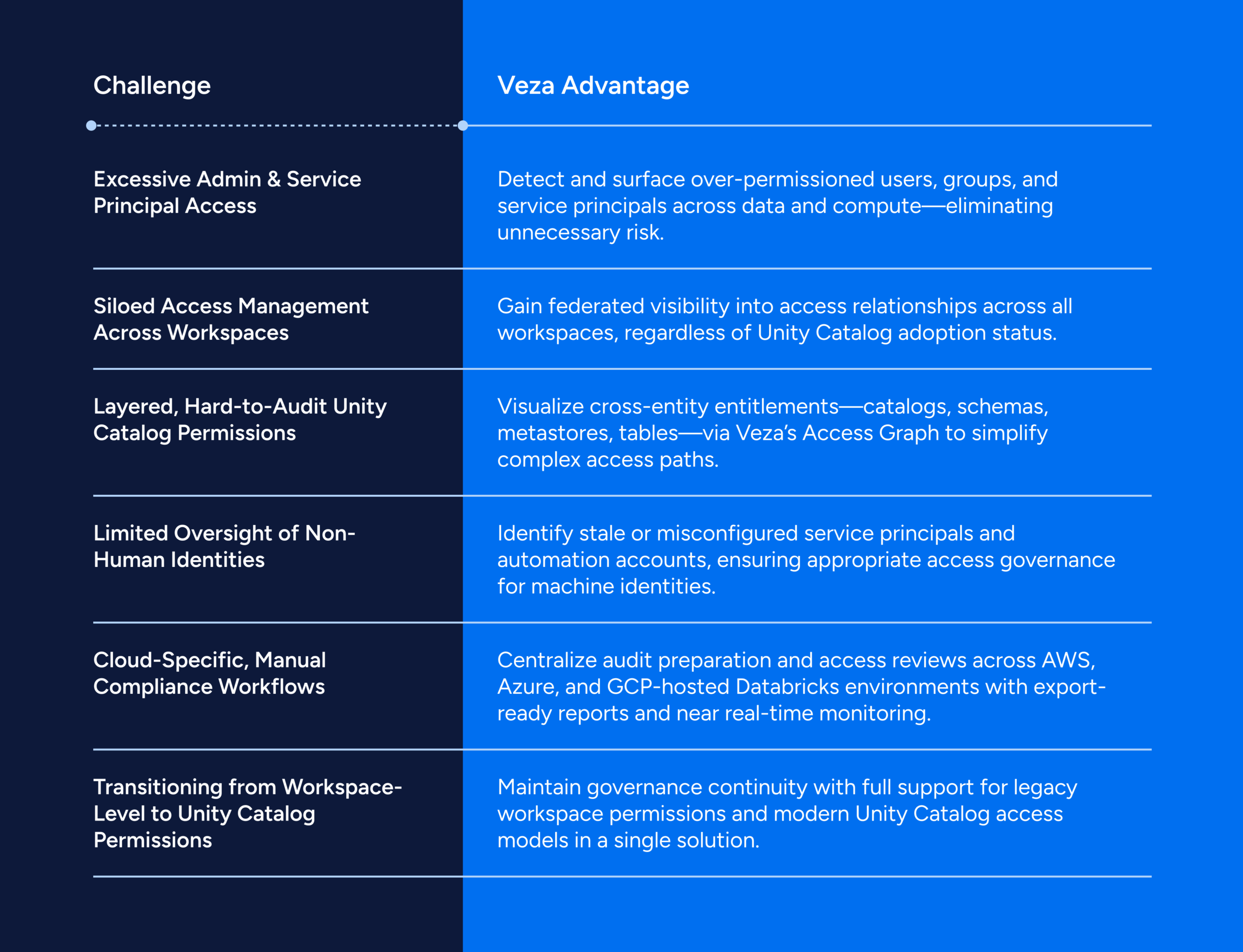
How Veza Helps
Veza integrates directly with both Unity Catalog–enabled and legacy workspace-level Databricks configurations to:
- Discover user → group → service principal → resource access relationships
- Visualize access across Catalogs, clusters, notebooks, schemas, and more with Veza’s Access Graph
- Identify excessive group assignments, admin overreach, and service principal sprawl
- Detect stale, inactive, or unused access, both human and machine
- Track changes to permissions and configurations in near real-time
- Simplify access reviews, audit readiness, and compliance workflows
Result: Unified, identity-centric governance across your Databricks estate—whether you’re fully migrated to Unity Catalog or still managing legacy access paths.
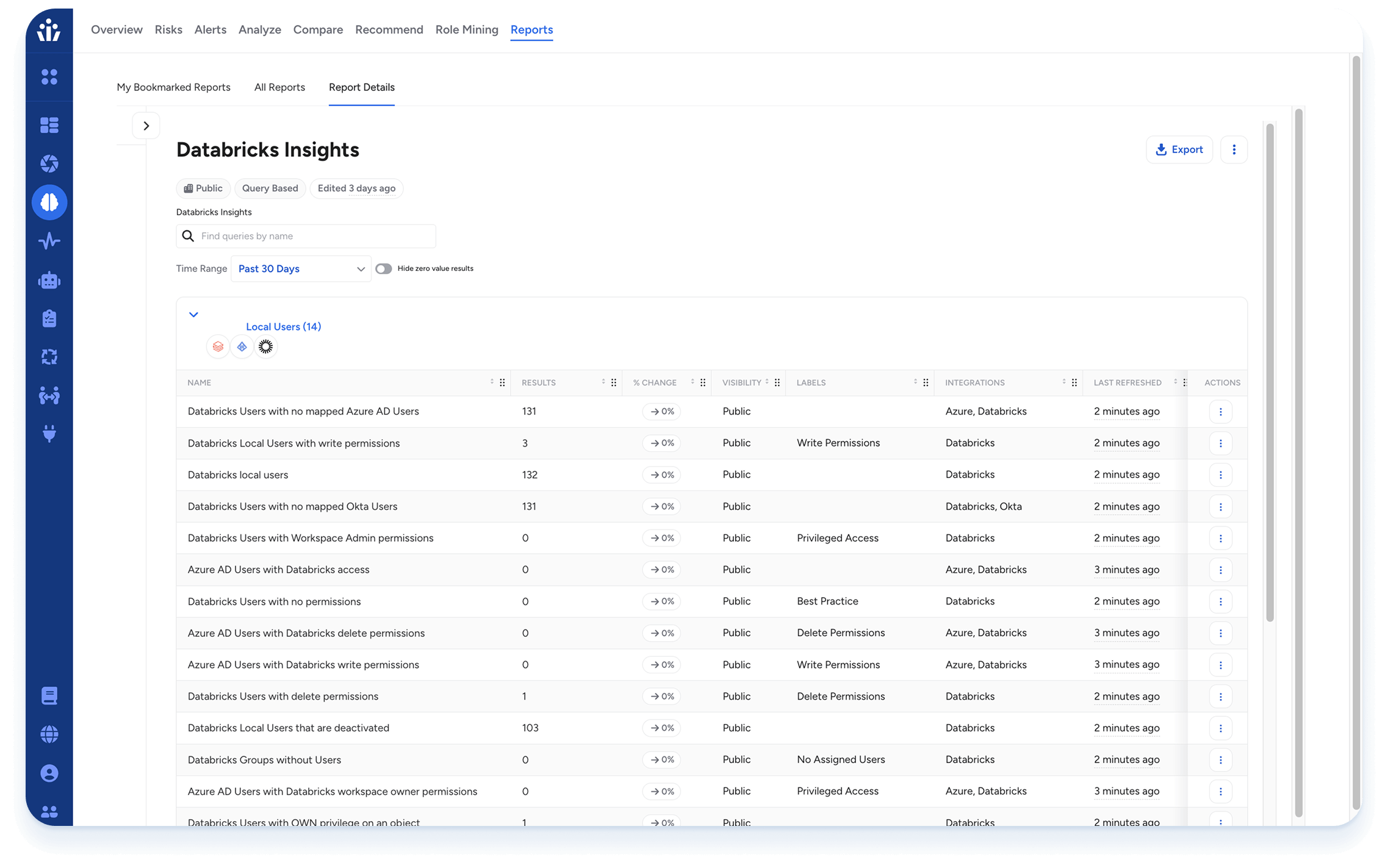
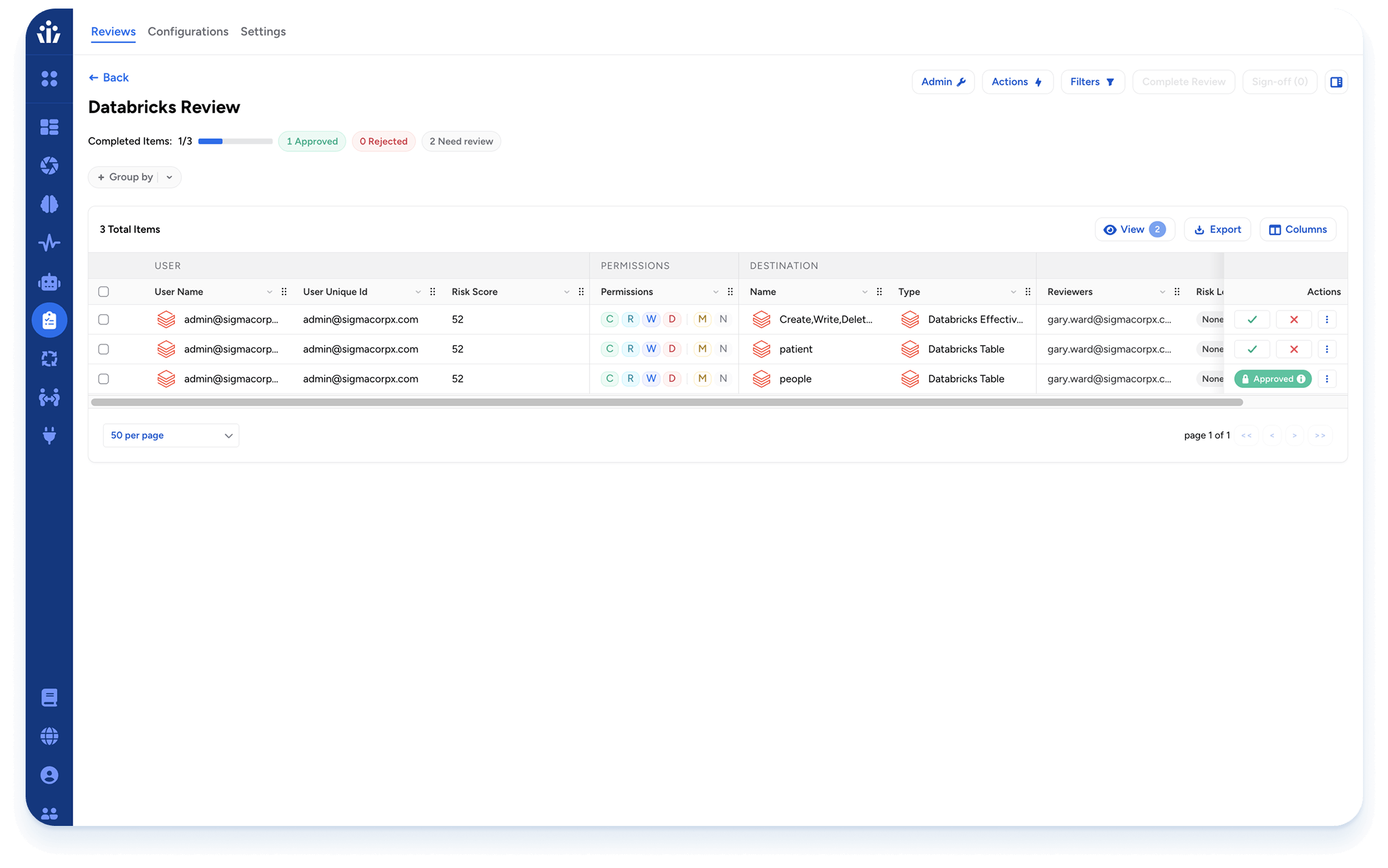
- Unified Visibility: Gain single-pane-of-glass visibility into users, groups, service principals, and resource entitlements across all workspaces and federated Unity Catalog layers.
- Access Risk Detection: Surface dormant access, misconfigured privileges, and over-extended entitlements—whether for humans or automation identities.
- Fine-Grained Audit Trails: Trace true access paths and generate export-ready reports aligned to SOX, GDPR, PCI DSS, and internal controls.
- Multi-Cloud Compliance Readiness: Support consistent, automated access reviews across AWS, Azure, and GCP-hosted Databricks deployments.
-
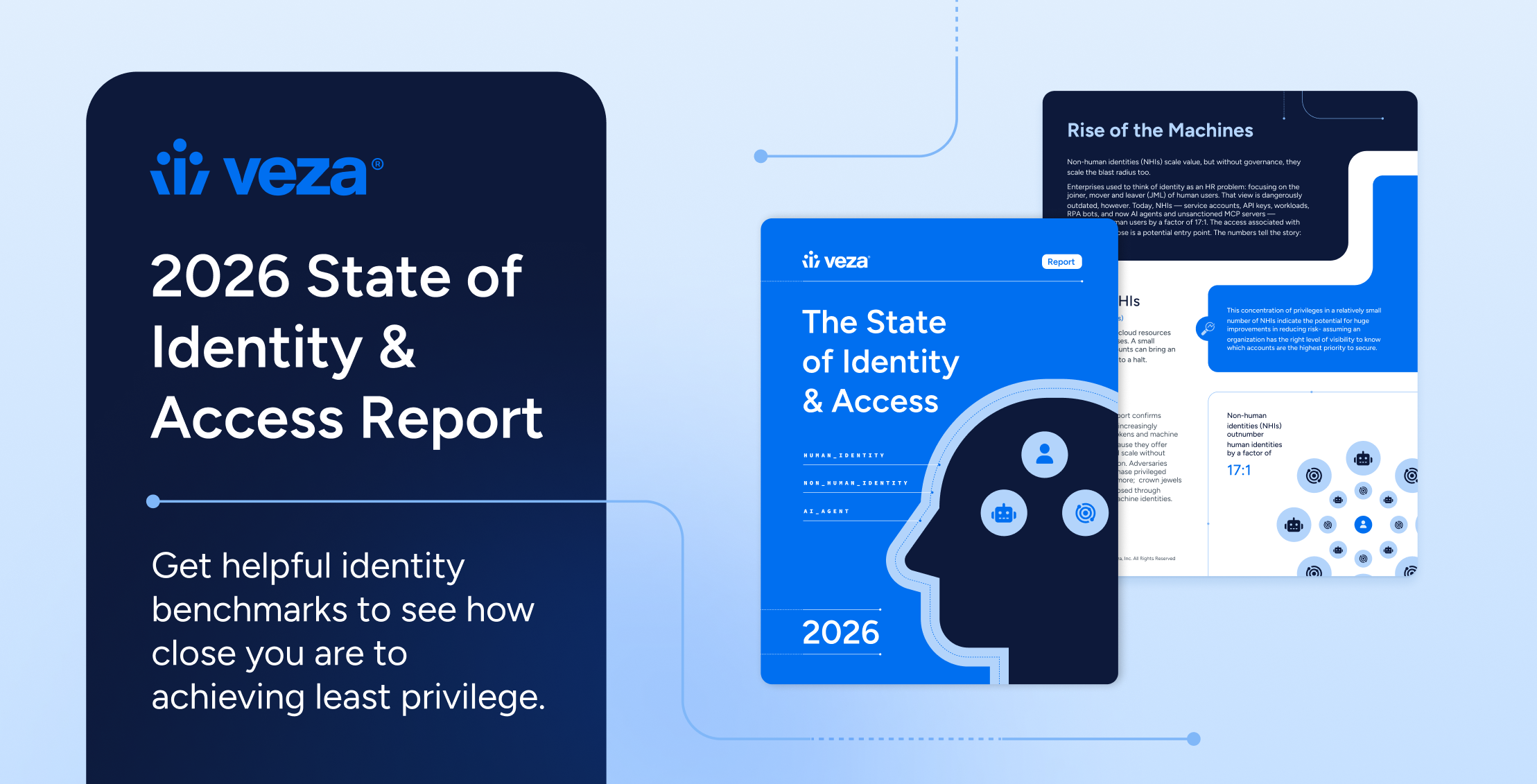 Company
CompanyVeza Identity & Access Research Report Reveals Identity Permissions Sprawl has Reached Critical Levels Amid Explosion of Machine and AI Agent Identities Across the Enterprise
Learn moreThe average identity now holds ~100K permissions, 38% of all accounts are dormant, 16.5% of total permissions belong to inactive users, and 27.8% of permissions remain ungoverned REDWOOD SHORES, Calif. – December 11, 2025 — Veza, the pioneer in identity security, today released the definitive identity and access permissions research report showing that enterprises are […] -
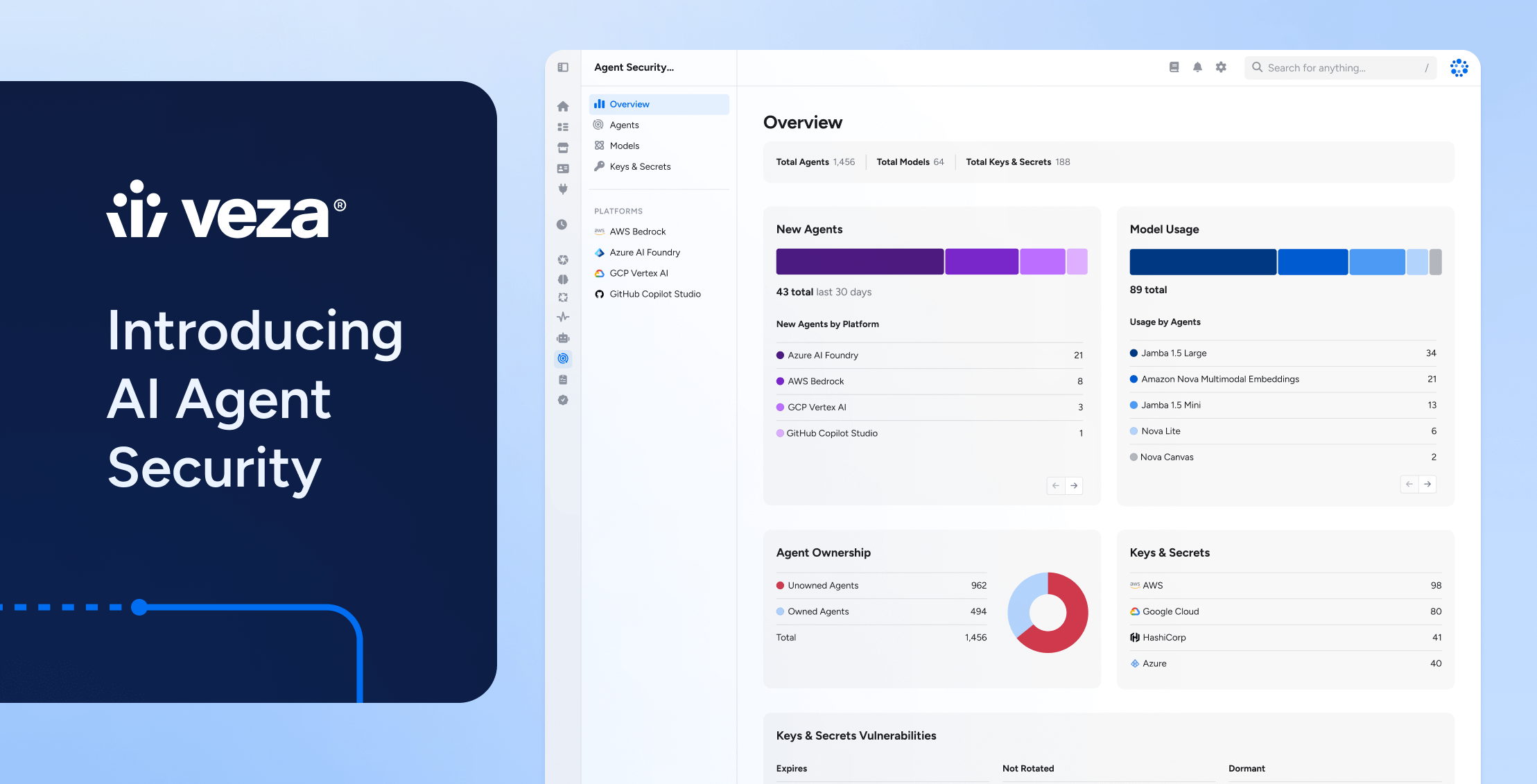 Company
CompanyVeza Introduces AI Agent Security to Protect and Govern AI Agents at Enterprise Scale
Learn more -
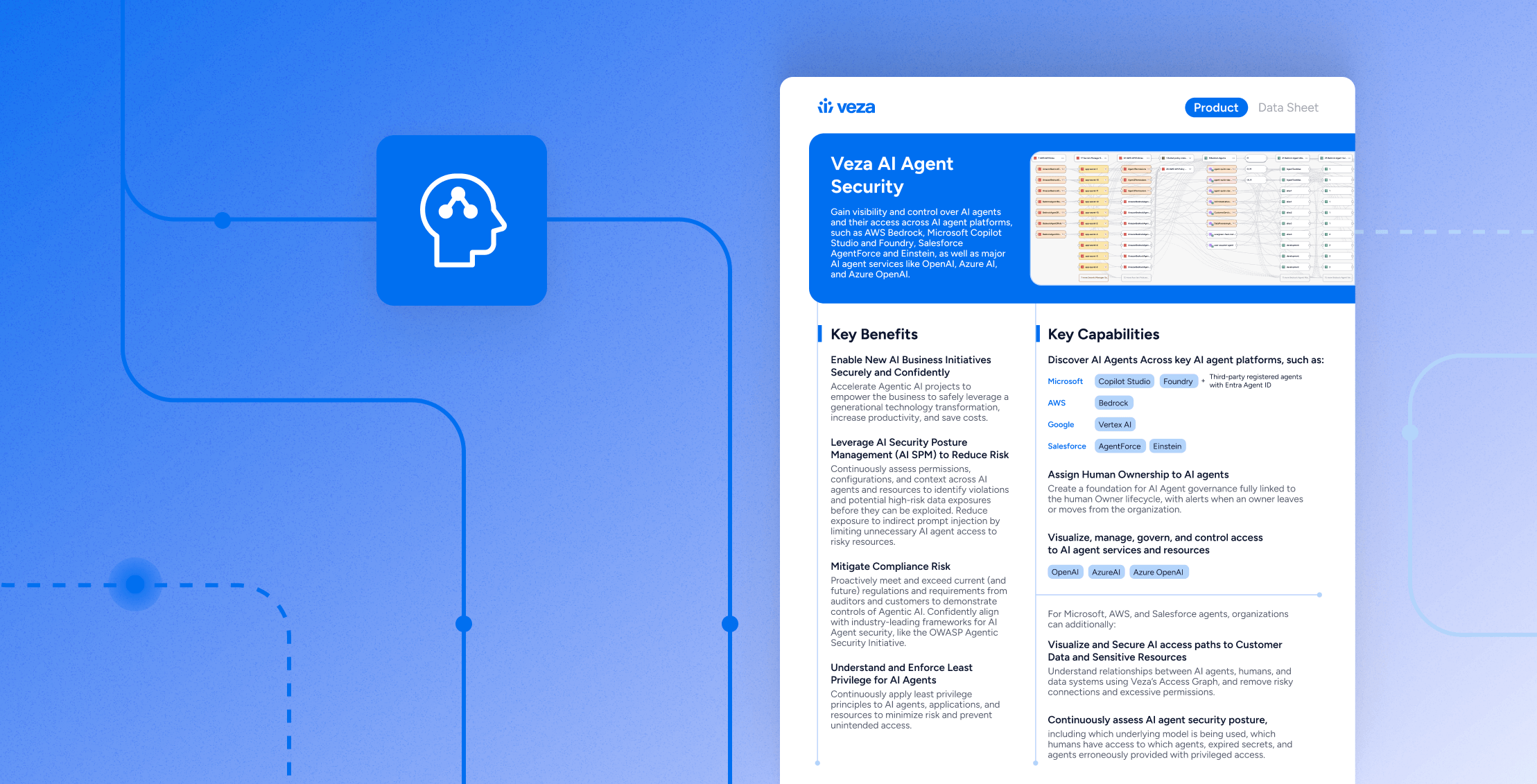 Data Sheet
Data SheetAI Agent Security Data Sheet | Veza
Learn more
